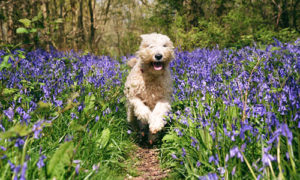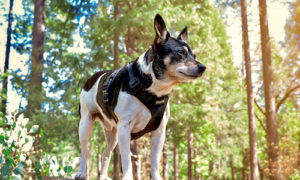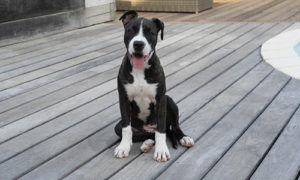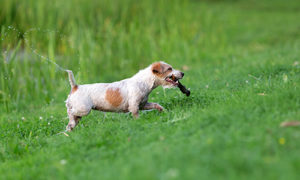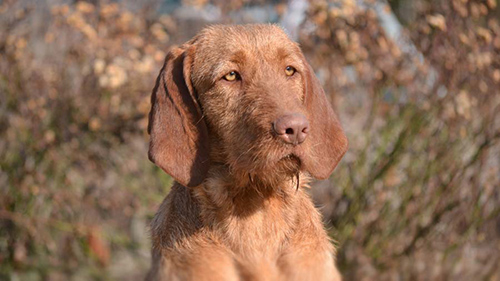
Falconers and hunters developed the Wirehaired Vizsla in Hungary sometime during the 1930s. They were trying to create a breed that would excel as a hunting companion and a family dog, similar to the Smooth-Coated Vizsla but better suited to harsh conditions. They primarily crossed Smooth-Coated Vizslas with German Wirehaired Pointers and later integrated breeds including the Pudelpointer, Wirehaired Pointing Griffon, and Irish Setter.
The breed’s numbers were drastically decreased during World War II; however, pioneer breeder Vasas Jozsef and his Csabal kennel were instrumental in preserving and perfecting the Wirehaired Vizsla during this period. In 1966, the FCI recognized the breed, and it made its way to North America, first to Canada and the United States in 1973. The dog entered the AKC’s Foundation Stock Service Program in 2008 and moved into the Miscellaneous Class in 2011.
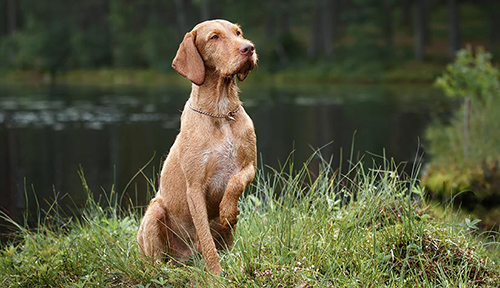
Breed Standard
The Wirehaired Vizsla is a medium-sized, well-balanced hunting dog with a dense, weather-resistant coat. The dog is well muscled with excellent bone and substance and slightly rectangular proportions. Its deep chest is moderately broad, and the level topline blends into a slightly rounded croup level. It can either be docked by a quarter of its length or kept natural.
The dog’s head is proportionate to the body, with a blunt muzzle. The low-set ears hang close to the cheeks. The eyes are medium-sized and oval, revealing a lively and intelligent expression highlighted by the eyebrows and beard. The breed is self-colored; therefore, the eyes, eye rims, nose, and lips blend with the coat’s golden rust color.
Breed Facts
| Energy level | Watchdog ability | ||
| Exercise requirements | Protection ability | ||
| Playfulness | Grooming requirements | ||
| Affection level | Cold tolerance | ||
| Friendliness toward dogs | Heat tolerance | ||
| Friendliness toward other pets | Friendliness toward strangers | ||
| Ease of training |
- Popularity: Rare
- Family group: Gundog, Pointer, Versatile Hunting Dog
- Country developed: Hungary
- Date developed: 1900s
- Original purpose: General hunting
- Today’s purpose: Hunting, field trials
- Other names: None
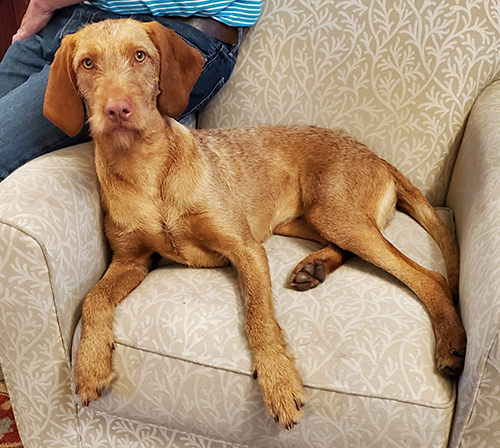
Activity level: This Vizsla is an energetic hunting dog with the stamina and resilience to work on rough and harsh terrain and extreme weather. The dog requires vigorous daily exercise such as swimming, hiking, running, playing in a safely fenced area, and dog sports. The Wirehaired Vizsla is relatively easygoing when indoors if allowed to get its daily activity.
Grooming: The dog requires occasional bathing, brushing, and stripping to tidy up the furnishings.
Coat: A wiry, dense, protective coat of 1 to 2 inches in length on the body; it is shorter and softer on the lower legs and belly, close-fitting, and short on the head and ears. Longer facial furnishings are present in the form of eyebrows and a beard on the muzzle.
Color: Shades of golden rust. Small white markings are commonly seen on the throat, forechest, and toes.
Group: Sporting
Year recognized by the AKC: 2014
Wirehaired Vizsla Temperament
The Wirehaired Vizsla is adaptable and rugged, with a well-developed hunting instinct. This breed has a biddable sensitive nature that makes it highly responsive to training, but it does not tolerate harsh handling. The dog is playful, demonstrative, loyal, and a great companion for active families. Wirehaired Vizsla’s are a breed that demands a lot of social interaction and structured activities. It usually gets along well with other dogs and children and may accept cats. However, they’re not recommended for homes with small pets and birds.
Health
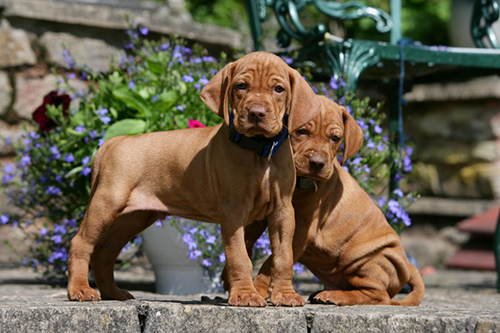
- Main concerns: CHD
- Minor concerns: none
- Rarely seen: allergies, epilepsy, urinary stones, distichiasis
- Recommended tests: hip, eye
- Life span: 9 to 13 years
- Weight: 40 to 55 pounds
- Height: Male – 23 to 25 inches; Female – 21.5 to 23 inches
Breeder and Buyer’s Advice
Remember that purchasing a dog is a lifelong responsibility. Please be patient and find a breeder that makes puppy buyers feel comfortable and who will be a source of help, information, and advice.
- Parent club: Wirehaired Vizsla Club of America (https://wvca.club/); founded in 2003
- Rescue: WVCA Rescue can be found on the parent club’s website

